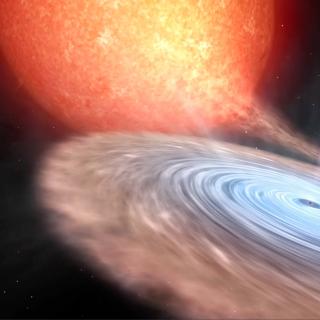Romoli, C.; Rieger, F.; Reyes, R. De Los; Reimer, O.; Renaud, M.; Reimer, A.; Raab, S.; Quirrenbach, A.; Punch, M.; Pühlhofer, G.; Prokoph, H.; Poon, H.; Prokhorov, D.; Pita, S.; Piel, Q.; Peyaud, B.; Petrucci, P.-O.; Perennes, C.; Pelletier, G.; Pekeur, N. W.; Panter, M.; Parsons, R. D.; Padovani, M.; Oya, I.; Ostrowski, M.; Öttl, S.; Ohm, S.; Odaka, H.; O'Brien, P.; Oakes, L.; Niemiec, J.; de Naurois, M.; Niederwanger, F.; Murach, T.; Moulin, E.; Morâ, K.; Mohrmann, L.; Mohamed, M.; Moderski, R.; Mitchell, A. M. W.; Meyer, M.; Meintjes, P. J.; Mayer, M.; Maxted, N.; Maurin, G.; Marx, R.; Mariaud, C.; Marcowith, A.; Marandon, V.; Lypova, I.; López-Coto, R.; Liu, R.; Lorentz, M.; Lohse, T.; Leser, E.; Lenain, J.-P.; Lemoine-Goumard, M.; Lemière, A.; Lefaucheur, J.; Lefranc, V.; Lees, J.-P.; Lau, J.; Lamanna, G.; Krüger, P. P.; Laffon, H.; Kraus, M.; Krayzel, F.; Krakau, S.; Kosack, K.; Komin, Nu.; Kolitzus, D.; Klepser, S.; Klochkov, D.; Kluźniak, W.; King, J.; Kieffer, M.; Khélifi, B.; Kerszberg, D.; Katarzyński, K.; Kastendieck, M. A.; Jung-Richardt, I.; Jouvin, L.; Jogler, T.; Jingo, M.; Jankowsky, F.; Jankowsky, D.; Janiak, M.; Jamrozy, M.; Jacholkowska, A.; Ivascenko, A.; Horns, D.; Holler, M.; Hofmann, W.; Hoischen, C.; Hinton, J. A.; Hervet, O.; Hermann, G.; Henri, G.; Heinzelmann, G.; Haupt, M. et al.
Referencia bibliográfica
Monthly Notices of the Royal Astronomical Society, Volume 469, Issue 4, p.4465-4482
Fecha de publicación:
8
2017
Número de autores del IAC
1
Número de citas referidas
78
Descripción
We report on the discovery of a new fast radio burst (FRB), FRB 150215,
with the Parkes radio telescope on 2015 February 15. The burst was
detected in real time with a dispersion measure (DM) of 1105.6 ±
0.8 pc cm-3, a pulse duration of 2.8^{+1.2}_{-0.5} ms, and a
measured peak flux density assuming that the burst was at beam centre of
0.7^{+0.2}_{-0.1} Jy. The FRB originated at a Galactic longitude and
latitude of 24.66°, 5.28° and 25° away from the Galactic
Center. The burst was found to be 43 ± 5 per cent linearly
polarized with a rotation measure (RM) in the range -9 < RM < 12
rad m-2 (95 per cent confidence level), consistent with zero.
The burst was followed up with 11 telescopes to search for radio,
optical, X-ray, γ-ray and neutrino emission. Neither transient nor
variable emission was found to be associated with the burst and no
repeat pulses have been observed in 17.25 h of observing. The sightline
to the burst is close to the Galactic plane and the observed physical
properties of FRB 150215 demonstrate the existence of sight lines of
anomalously low RM for a given electron column density. The Galactic RM
foreground may approach a null value due to magnetic field reversals
along the line of sight, a decreased total electron column density from
the Milky Way, or some combination of these effects. A lower Galactic DM
contribution might explain why this burst was detectable whereas
previous searches at low latitude have had lower detection rates than
those out of the plane.
Proyectos relacionados
Agujeros negros, estrellas de neutrones, enanas blancas y su entorno local
Los agujeros negros y estrellas de neutrones en binarias de rayos-X son laboratorios únicos para explorar la física de estos objetos compactos. No solo permiten confirmar la existencia de agujeros negros de origen estelar a través de mediciones dinámicas de sus masas, sino que también permiten investigar el comportamiento de la materia y la
